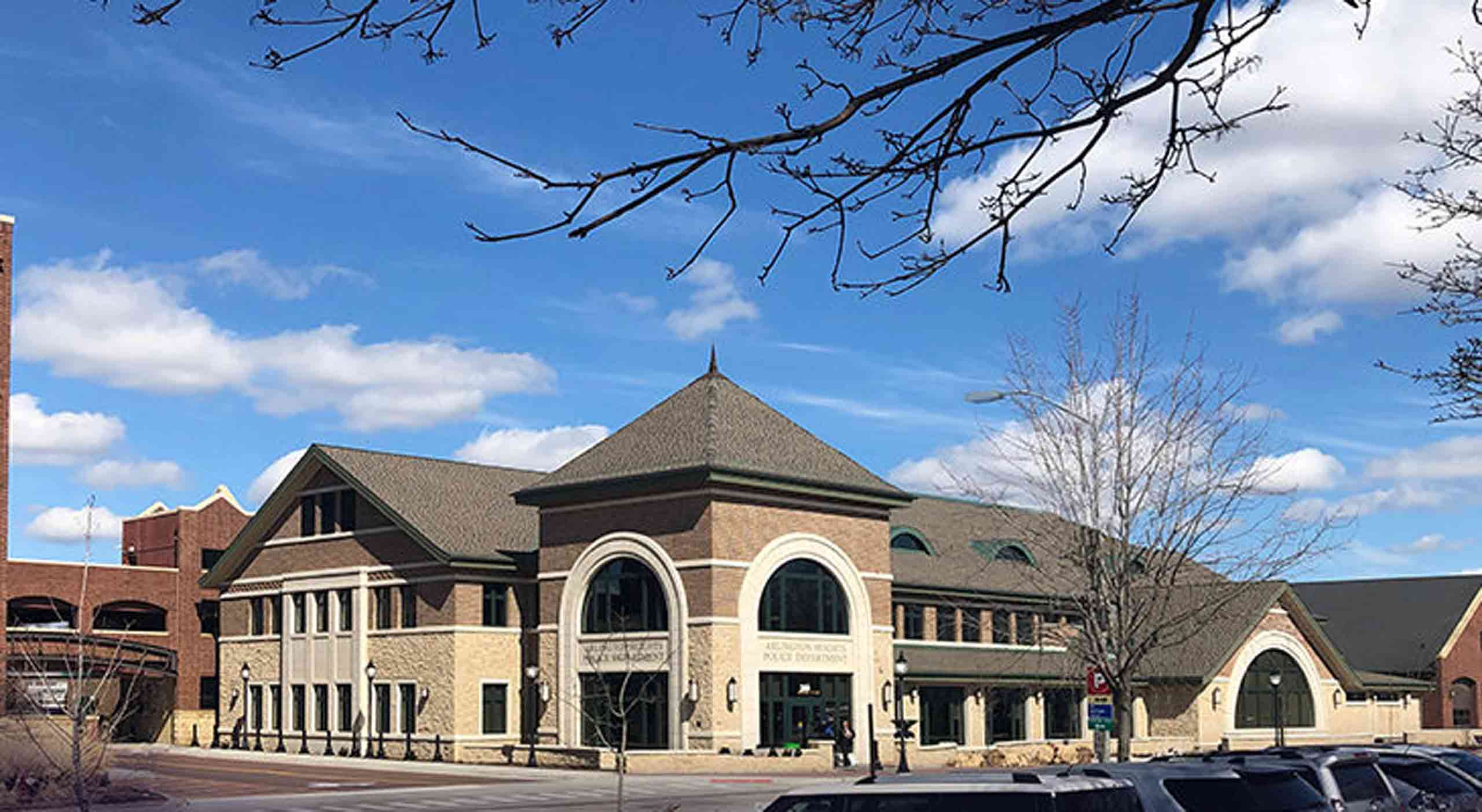
Arlington Heights Police Station earns 2020 APWA Project of the Year Award in American Public Works Association’s national competition
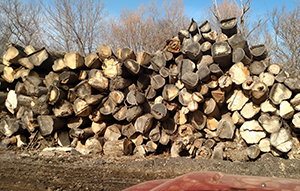
For more than five years, a pile of 500 ash logs sat at a public works yard in Arlington Heights. The logs came from trees the village’s public works department had to chop down during a decade-long emerald ash borer infestation. Employees, wanting something more out of the trees, decided to hold onto them. It proved to be a wise decision—today, one highlight of Arlington Heights’ new police station is the ash wood—from the very trees the village chopped down—that enriches the public spaces . . . an idea proposed by the public works department.


This is just one of the many reasons why the American Public Works Association (APWA) gave the station a 2020 Public Works Project of the Year Award ($5 million to $25 million structures category). Earlier in 2020, the project won a similar award from the Chicago Chapter level (covers eight counties in northeastern Illinois) and then from the Suburban Branch level (covers Cook County municipalities outside the City of Chicago).
Award recipients include the following:
- Village of Arlington Heights: core team includes Cris Papierniak (assistant director of public works), Nicholas Pecora (chief of police), and Charles Witherington-Perkins (director of planning and community development). Also involved were Gerald Mourning (recently retired chief of police), Scott Shirley (director of public works), Steven Hautzinger (village planner), Randall Recklaus (village manager), and Thomas Hayes (mayor).
- Legat Architects (architect of record and design architect)
- Riley Construction (construction manager)
- Additional team members include: McClaren, Wilson & Lawrie Architects (design consultants for public safety and forensic sciences), 20/10 Engineering Group (mechanical, electrical, plumbing, and fire safety engineers), Larson Engineering (structural engineers), Mackie Consultants (civil engineering), and Upland Design (landscape architects)
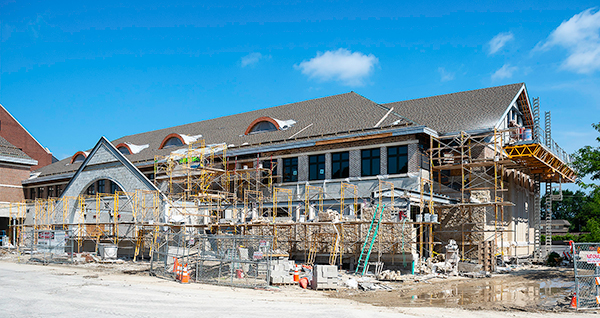
The national award honors “excellence in the management, administration, and implementation of public works projects by recognizing the alliance between the managing agency, the consultant/architect/engineer, and the contractor who worked together to complete public works projects.”
APWA President William (Bill) Spearman III, P.E. said, “APWA is proud to recognize these important projects that are planned, designed, and constructed to benefit all of the people in their communities. Public works projects are even more important during this time, as our communities face the difficulties associated with the COVID-19 pandemic.”
Criteria that judges used to select the project include time- and money-saving techniques, safety performance, community awareness, and sustainability.
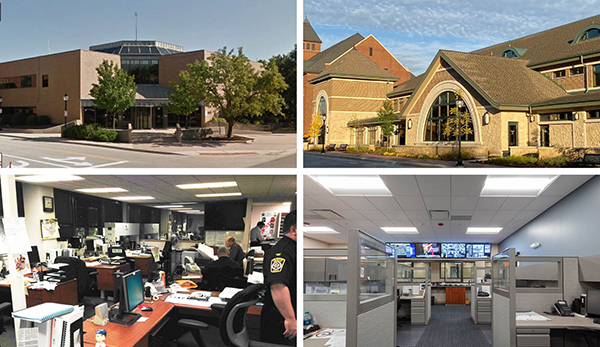
The 70,500-square-foot station replaces a 40-year-old facility that suffered from dated infrastructure and failing systems. The new station doubles the size of its predecessor and has the capacity to house nearly twice as many officers. If offers much more office, training, and storage space, plus its layout and technologies speed up processes for the department.

From the indoor firing range and defensive tactics room on the lower level of the parking garage (to reduce gunshot noise and lead dust pollution from ammunition) to the conference room atop the entry tower, the space is flexible and adaptable for future uses. The project also includes a 10,000-square-foot enclosed and hidden parking garage that keeps police vehicles free of ice and snow. Construction management strategies saved more than $400,000 in costs.
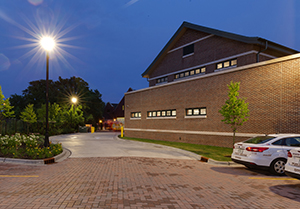
The public works department’s contribution to the project goes far beyond the sustainable wood features. Not only did every foreman get involved during the design, but public works staff were heavily involved in the construction process. For example, MEGALUG connections on the water main serving the adjacent fire department so that the pipe remained stable during construction and sheet pile installation. Moreover, public works personnel played a key role in ensuring that the design of the station focused on minimal maintenance and long-term energy efficiency. And when an adjacent stair tower started to shift during construction, it was the public works department that came to the rescue. More on this below.
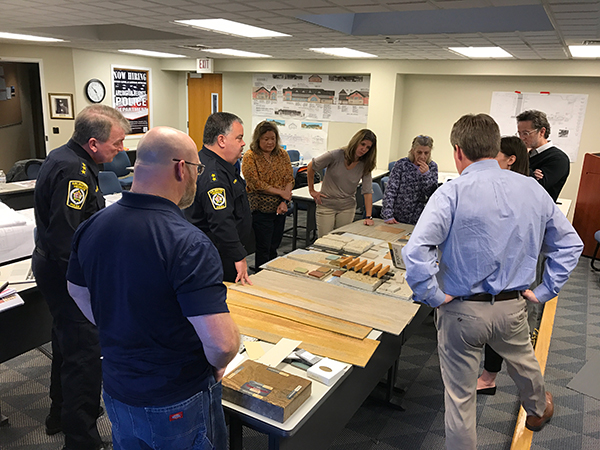
At the Center of a Municipal Campus
One of the biggest challenges in both building and designing the new station was being considerate of its location between the village hall and fire station. To minimize construction disruption, the team created a detailed site logistics plan and kept the adjacent municipal parking garage open throughout construction. Public works swept the site twice a week to make sure streets were clean for visitors.
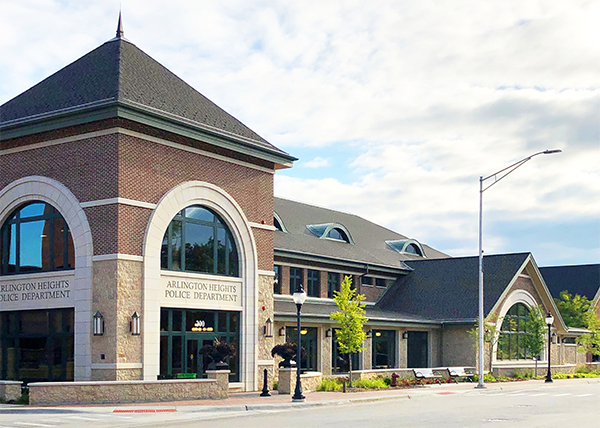
From an exterior design standpoint, architects considered how to give the police department its own identity, while complementing the historic style of its neighbors. Legat project designer and Arlington Heights resident Steve Blye said, “It was clear that the village wanted a compatibly historic-looking replacement building, but if we copied the design aesthetic of the village hall and fire station, people wouldn’t be able to tell where each building started or ended. The resulting station design, inspired by the Richardsonian Romanesque style, still has the rugged look with historic character, but it looks noticeably different than the other facilities through the strong geometry and similar but modified traditional masonry.”
According to Blye, the inside of the building demonstrates two different design approaches: 1) the historic-looking public spaces that promote the vernacular of the municipal campus and the historic neighborhood, and 2) the more functionally modern and “tactical corporate” design of the office, investigative, training, and support spaces.
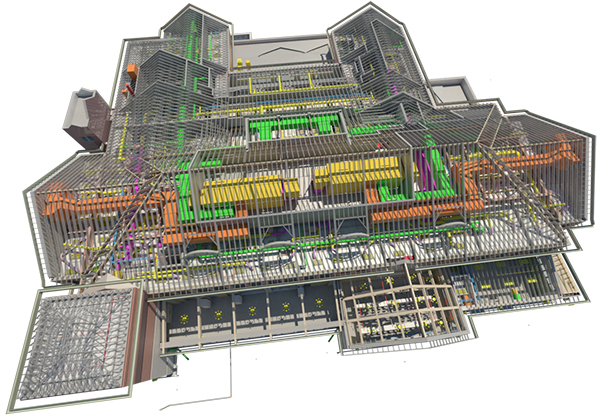
Design and Construction Management Techniques Save Time and Money
The Riley Construction team adapted and revised Legat’s 3-D computer model and used compatible 3-D software to set up construction phasing. Additionally, Riley used “clash detection software” to identify several overlaps or conflicts between building systems. As a result, the team resolved more than 300 issues before construction to save an estimated $225,000.
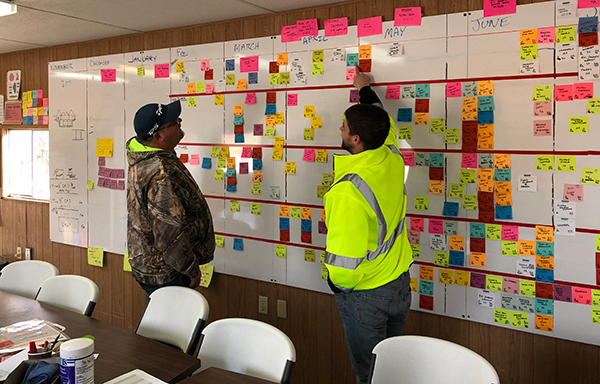
Additionally, regular pre-installation meetings brought together all trade subcontractors involved with construction. The meetings defined each trade’s role and addressed concerns regarding scheduling, materials, manpower, and site restrictions.
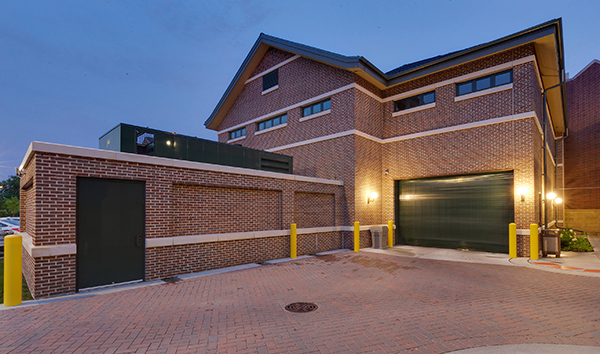
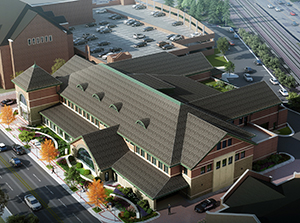
Additional time- and money-saving strategies included the following:
- Designers specified non-historic and less expensive, though still durable materials in the non-public parts of the building.
- The construction manager joined early in the design process to help the village identify cost-saving opportunities such as considering below-grade vs. second-floor program allocations, as well as alternate building materials and mechanical system adjustments.
- Instead of load-bearing masonry, the structural system uses a combination of precast concrete and structural steel, which shortened construction by three months.
- The squad car parking garage at the rear of the station was enclosed with precast wall and slab plank panels. This idea came out of early construction planning to lower construction costs and allow building trades to have a large, column-free staging area to work and store materials to
complete work on the more complicated, ornate front of the building. - The architects designed the basement to be recessed from the property line to save costs and time, as well as reduce noise that would have resulted from pile-driving to retain the existing soil and driveways.
A Moving Stair Tower and an Out-of-control Vehicle: The Challenges
Early in construction, village building staff arrived in the morning to discover that the top of the three-story stair tower next to the village hall had shifted several inches due to foundation settlement during station excavation.
The project team worked with contractors to pin the foundation into existing shoring and cap it in concrete. They then installed rakers from the stair tower into the basement. This limited the use of gang forms and complicated the completion of the foundation. The rakers had to be manually cut and removed from the basement once the foundation was poured and could structurally support the load of the adjacent stairwell.
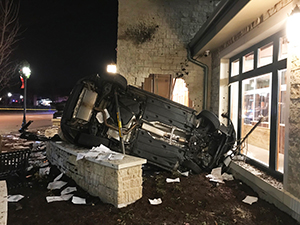
Just a few weeks prior to the station’s grand opening, an intoxicated driver lost control one evening. His vehicle, going more than 100 miles an hour on a low-speed residential street, skidded around a corner and headed straight toward the lobby of the new police station. The car hit the planter retaining walls (designed to stop or slow down intentional vehicular attacks), then barrel-rolled several times before punching a large hole in the stone tower. Fortunately, it missed hitting major structural columns and stopped short of the elaborate wood-framed lobby windows by just over an inch! Miraculously, the driver survived. The retaining wall and bullet-resistant glazing exemplify the team’s preparation for attacks on the station, personnel, and the public.
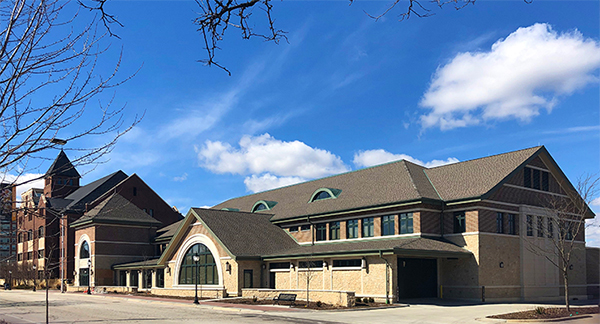
Minimally Disruptive Construction
The Project of the Year award also recognizes the project team’s efforts to avoid disruption during the construction process:
- Riley completed a detailed site logistics plan for the demolition, foundation, and structure phases to minimize construction traffic.
- Public works swept the site twice a week to ensure the streets were clean for village hall visitors.
- Employees and nearby residents received notices prior to any disruptive construction activities.
- Portions of the adjacent parking garage were kept open throughout construction.
The village received minimal complaints during construction.
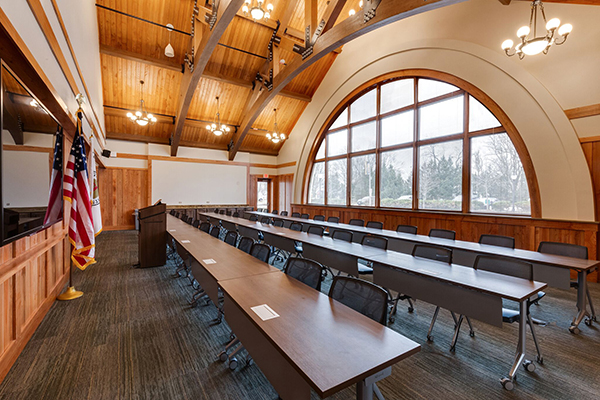
Sustainability Accomplishments
The national APWA award also applauds the station’s sustainability achievements, the most prominent of which is the reuse of wood from trees that the village had to cut down due to the ash borer infestation.
During the design phase, the public works department introduced the idea of using the logs for construction. Cris Papierniak, assistant director of public works, said, “We knew many communities had reused ash trees for benches, but we wondered if anyone had done anything in the area of structural timbers.”
The team took this idea and ran with it—the wood not only appears in the four-inch by six-inch structural ceiling planks in ceilings of the entry and common areas, but also in the wall panels, benches, and display cases. The team even tracked down and tasked Wisconsin-based H Window with using the wood to create all the window frames. In the end, more than 400 logs were used.
The building’s brick masonry was sourced from Illinois, exterior stone came from Wisconsin, and interior stone for counters and windowsills was mined in Missouri.
The village also received a Metropolitan Water Reclamation District of Greater Chicago (MWRD) grant for permeable pavers on the driveway and behind the building, as well as construction of a rain garden to help filter the site’s stormwater runoff. Unlike standard asphalt, the pavers absorb rainwater through their joints to prevent the runoff that causes erosion and carries pollutants into water systems.
Get the full story on how the Arlington Heights Police Station improves efficiency, safety, and community connections. See more images of the ash wood used in the station.
Contact us to learn more about police station or public works design, or comment below to share your thoughts on this post.


